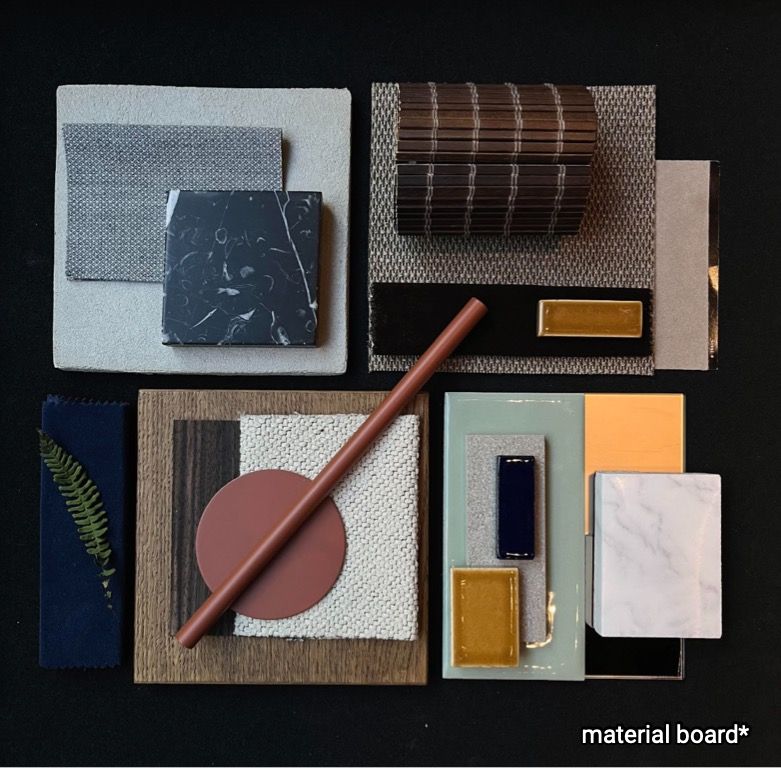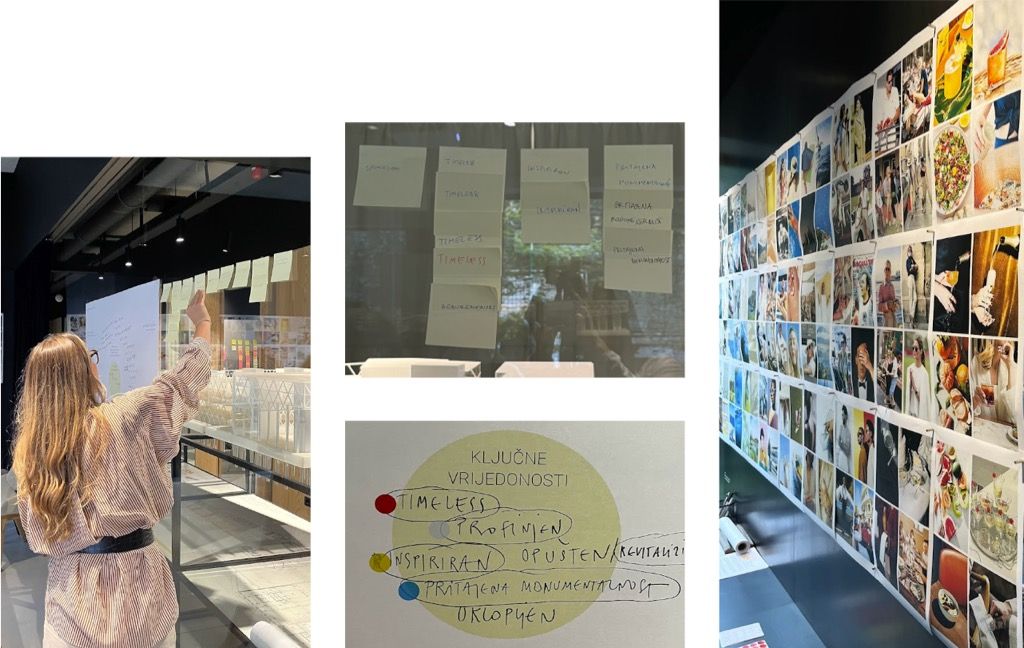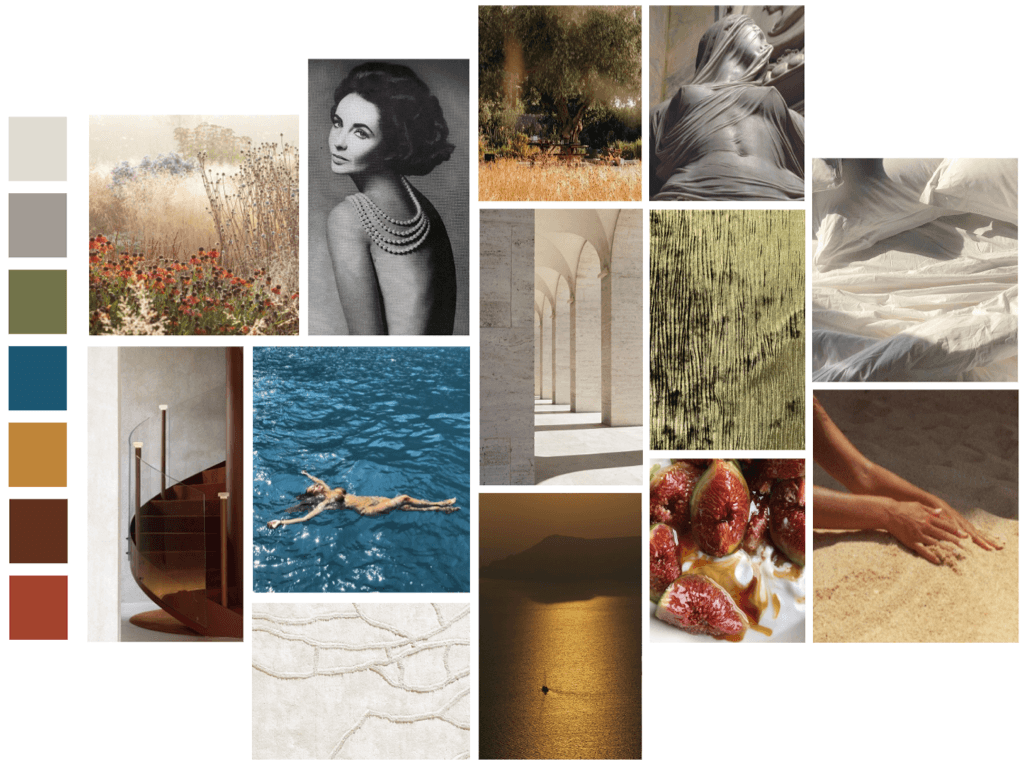Interior design methodology, by Mia A. Vukelić and Nives K. Rister

Our work methodology approaches each project as a unique instance that needs to be tailored to a specific need of the client, site or program. To establish the main project concept, it is necessary to have detailed steps that guide us from the conceiving phase towards the project execution.
The main project phases that each interior goes through in our office are defining a project, setting the concept, a materialization of that same concept and finally realization where we check if all our premises remained intact.
We start by defining a project. This phase is crucial to us as it sets a foundation for all the other phases. Some tools we use during this phase are creating mood boards and narratives, setting key values and design language, defining a product, and finding inspiration through analysis.
Defining a product helps us understand what we have to achieve, as each project has a specific product outcome. Drawing inspiration from Simon Sinek's Golden Circle methodology, we verbalize the essence of our projects and use the Why-How-What Wheel.
Why - gives a reason or purpose behind everything we do, the belief and the reason why this project should exist. How - describes the actions we take to achieve our goal, while What - specifies what the project has to offer.
That wheel is filled from outside towards inside by answering questions:
What are the reasons to believe? How do we describe it?
How do guests / visitors / inhabitants describe the project?
How are those users perceived by their surroundings?
What benefits does a local community have from the project?
After these questions are answered, together with a client we choose four to five words that stand as key values for the entire project.

The issue we usually encounter while working with key values is that each word is anticipated by each team member, ours and clients differently. To avoid confusion, we put together a collage of images that we agreed upon that represent a specific keyword most accurately. Those images are not references to a specific interior or architecture, but they show distinctive atmosphere, rhythm, colour, shape, art, event or a person to help us find ideas somewhere else but spatial solutions from other authors.

All of this leads to defining a concept - an inspiration that will be used in creating the project narrative. To get our sources of inspiration, we do a thorough analysis of the site, location, program, possible users and many more. That helps us determine the most influential segments we believe are significant in forming a project narrative.
As the concept takes shape, we transition from narrative to materialization. Sustainability, functionality, and aesthetic appeal converge as we select materials, finishes, and furnishings that breathe life into our vision.
Materialisation begins with selecting the images for all the key values, which helps us to create a mood board for the entire project. A project mood board is highly important to us as it helps us navigate through extensive projects without losing track of what was the initial idea. It helps us operate in large teams so that everybody knows what the final product should represent. Apart from setting a base mood for the project, it guides us through the main colours and hues that will be used within the project.

The material board* helps us get a sense of the look and feel of the room. It contains all the materials that are considered for the particular room.
To get all the necessary materials we contact our suppliers and get the samples.
After we choose all the materials, we do the room renderings necessary for (us and) the client to confirm that the envisioned design is according to their needs and expectations.

As the concept takes shape, we transition from narrative to materialization. All of these phases set a solid base for further development of the project where we propose adequate materials, specify specific fixed and loose furniture, develop lightning concepts and match projects of our collaborators to gain a unique interior project.
Collaborating seamlessly with craftsmen, contractors, and suppliers, we create specifications and ensure that every detail is executed with attention.
The specifications are an important part of the design process. Serving as a vital link between concept and execution, specifications provide a detailed roadmap for translating design visions into tangible realities. From product specifications to custom product specifications, every component is carefully crafted to ensure clarity and cohesion.
In conclusion, each phase is devoted to creativity, innovation, and a relentless pursuit of excellence. As we continue to refine our methodologies and push the boundaries of design, we remain committed to crafting immersive and interesting experiences that resonate with our clients and communities alike.

